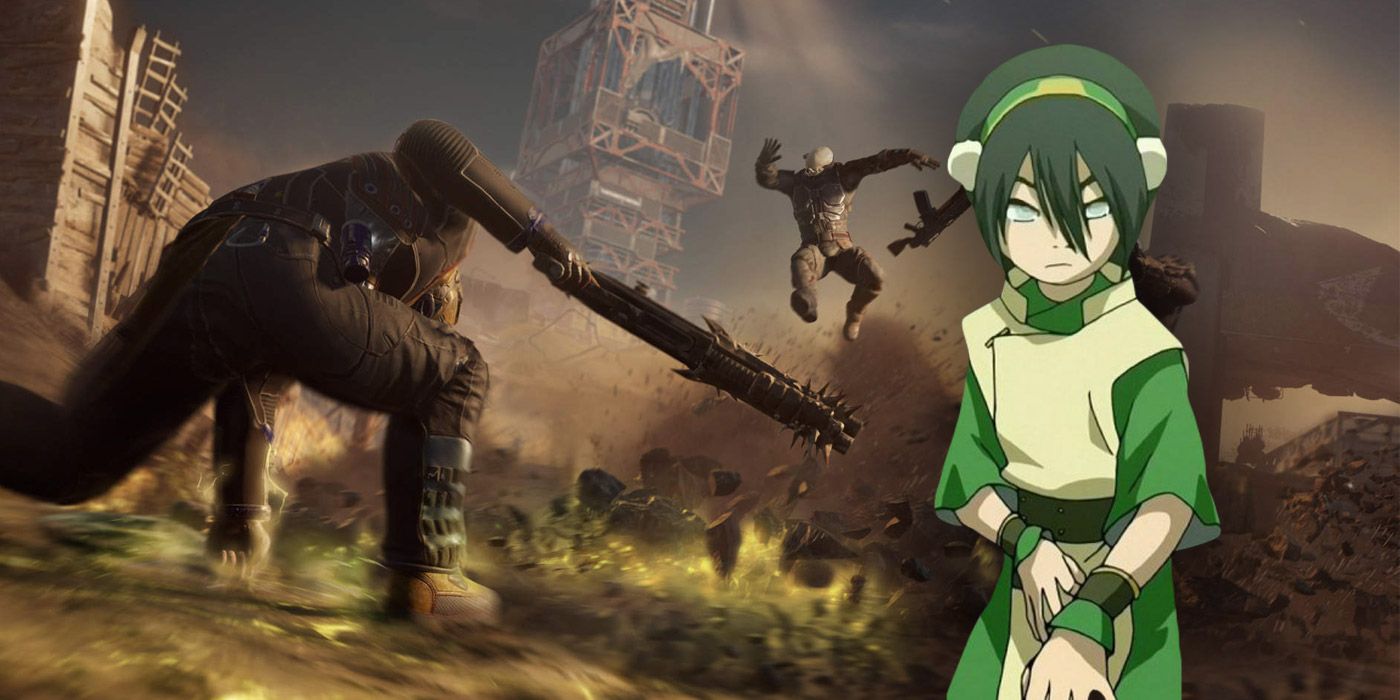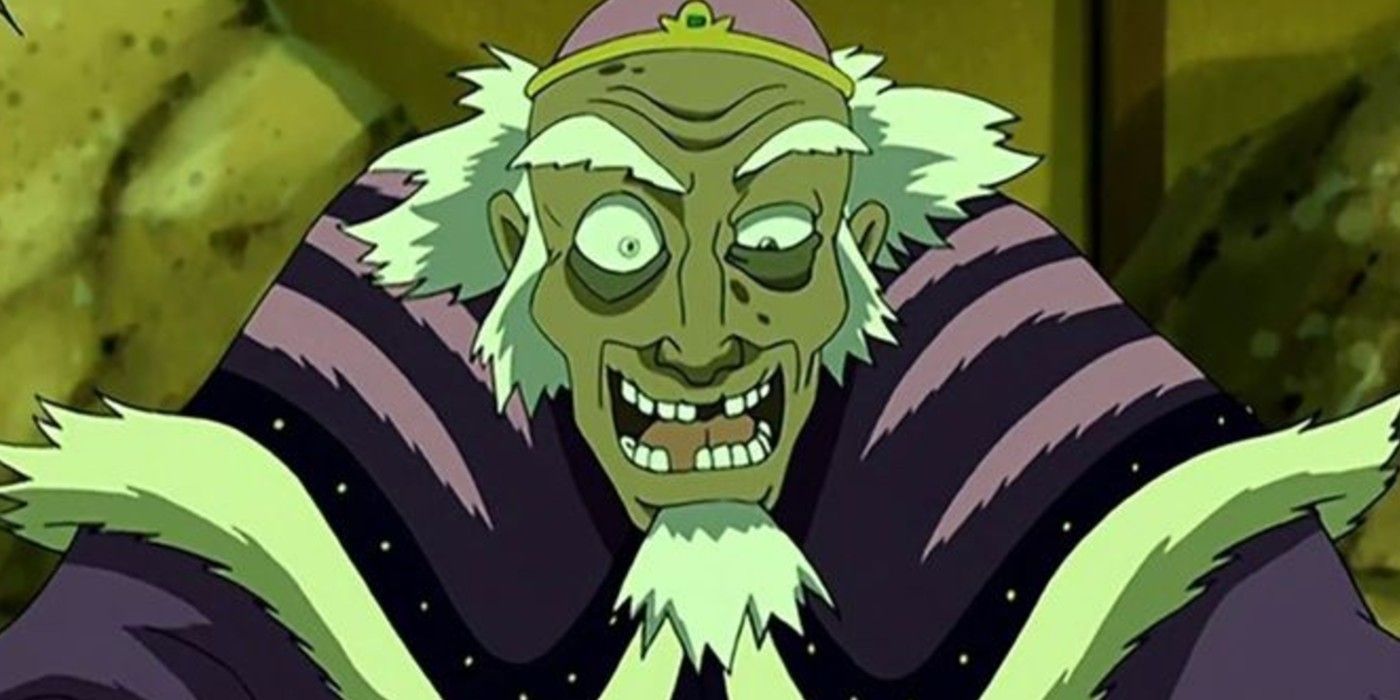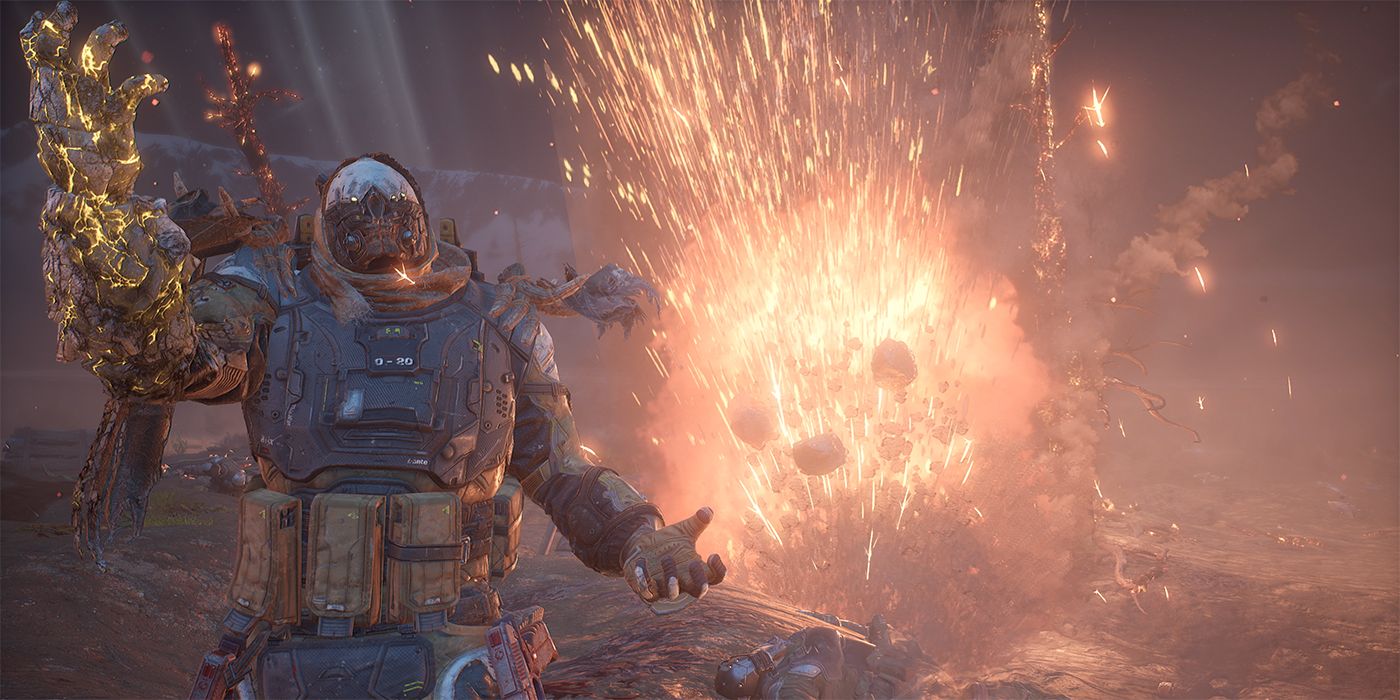
When it comes to Outriders' 4 classes, choosing just one may not be so simple. Each class is interesting in concept and even more so in gameplay. For those who really want to do it all from a support stance, Outriders' Technomancer class is really a jack of all trades. On the other hand, those who want to get close in, manipulate time, and take a more "fluid" approach have the Trickster as an option, while hanging back, controlling the crowd, and really dishing out the hits is possible via the Pyromancer. And if players want to take a hit back and hit back hard, there's the Devastator.
It's not hard to look at the Pyromancer and the Devastator, two classes which manipulate fire and earth, and think of Avatar: The Last Airbender. Of course, there's the childhood-destroying thought of his being ATLA with guns, but at its core concept, one could look at the Devastator and easily compare it to the Earthbender. Both are characters of substance, emphasizing strength and endurance. Both have similar skillsets, such as the ability to bring forth a spike out of the ground and just general manipulation of seismic things. However, to truly say that the Devastator was an Earthbender or that ATLA's Earthbenders are somehow equivalent to Outriders' Devastator class is disingenuous at best.
RELATED: What to Expect from the Outriders Demo

Indeed, there are some base comparisons in that both Devastators and Earthbenders use the earth to fight and for defense, but the source of that power is very different. With a focus on martial arts, earthbending relies on neutral jing—instead of the aggression of positive jing or the pacifism of negative jing, Earthbenders wait and strike when the moment comes. They may seem as if they are doing nothing, but they are listening and waiting. When they act, they act decisively.
There are many instances where this philosophy can be seen in Avatar: The Last Airbender, such as when Toph is teaching Aang how to earthbend. Aang has to wait for the right time then act, but his tendency to rely on airbending, or negative jing, makes this difficult for him. At the same time, King Bumi can be seen putting this in practice when he liberates Omashu single-handedly. He waited for the precise time and then acted swiftly, showing how earthbending isn't an act of fighting aggressively or defensively, but decisively, unlike Outriders.

Fans of ATLA's Earthbenders and Tank-y classes will find what they want from the Devastator, but its power comes from a strange anomaly on the planet Enoch. This, in turn, helps the characters survive in an incredibly hostile environment with earth-focused abilities. However, there's no "wait-and-strike" methodology to the Devastator. It heals by killing those who stand too close to it, it has abilities that inherently aggressive like Impale or Boulderdash, it has abilities that are inherently defensive like Reflect Bullets and Golem, but nothing about it deals with waiting. Indeed, the fast-paced nature of Outriders makes this impossible.
After all, Outriders' mantra is "survival demands aggression," not "survival demands patience." While the Devastator is more than an Earthbender, the ATLA culture is no less than the Devastator, just different. But for those who enjoy earth manipulation and the ability to withstand damage, it's easy to be drawn to either of these. The Devastator class will scratch that itch first, but perhaps the upcoming Avatar: The Last Airbender tabletop RPG will really showcase the neutral jing aspects of earthbending.
Outriders releases April 1 for PC, PS4, PS5, Xbox One, and Xbox Series X, with a Stadia version in development.
MORE: The Case for a New, Better Avatar: The Last Airbender Video Game

